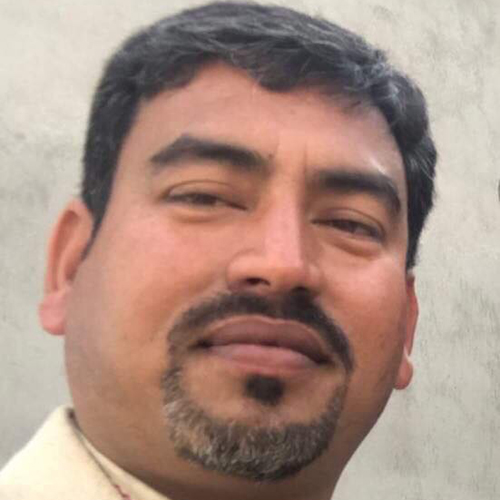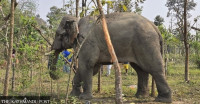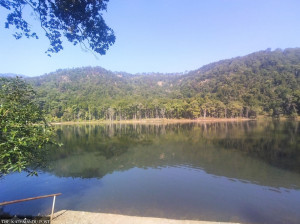Sudurpaschim Province
The story of an airport and what connectivity can achieve
Dhangadhi airport, upgraded at the initiative of the people, has not only boosted in economic growth but also helped connect the plains and the mountains in the region.
Arjun Shah
In 2004, Kailali Chamber of Commerce and Industry organised the convention of Nepal-India Friendship Association in Dhangadhi and then Indian Ambassador Shyam Sharan was invited as chief guest. When the ambassador arrived, the organisers were in the mood to ask for Indian assistance to help build an airport in the Far-west.
At that time, the runway of Dhangadhi Airport was not tarmacked. To reach Dhangadhi from Kathmandu, one had to go to Nepalgunj by air and travel on bus for four hours from there. The Indian envoy couldn’t come to Dhangadhi after the Maoists closed Kailali on the day of his planned arrival. The organiser's bid to seek help for the airport had to be aborted.
Getting to Dhangadhi by road was also not easy as passengers felt unsafe due to the ongoing Maoist insurgency. Policy makers and top officials couldn’t come to the far-west region because of this reason. Various non-governmental organisations, donors and government bodies organized their programmes targeted at the far-west, in Nepalgunj.
But things have changed now. Shree Airlines and Buddha Airlines fly two of their large aircraft daily on the Dhangadhi-Kathmandu sector. Saurya Airlines is also preparing to start regular flights.
"You can come to Dhangadhi in the morning and return to Kathmandu in the evening," said Tej Bahadur Budha Thapa, chief of Dhangadhi Airport. “Around 700 passengers use the airport every day. The airlines register daily transactions of over Rs4 million.”
The airport has bridged the gap between the far-west and Kathmandu and its hilly districts. The hassle of traveling 662 kilometers to reach Kathmandu is now history. The journey from Kathmandu to Dhangadhi can now be completed in one and a half hours.
After being named the capital of Sudurpaschim, Dhangadhi is now bustling as a regional hub for education, health and trade. As government agencies, as well as the private sector, prioritised economic development, Dhangadhi Airport has established itself as a basis for development in the region.
All this was not achieved through a miracle. The airport became a reality only due to the efforts put in by industrialists of Kailali, their innovative thinking and financial contribution from many residents of the province.
Until the Chisapani Bridge in Karnali was built in 1992, the entire far-west was not connected to the rest of Nepal by road. The construction of 22 bridges on the Chisapani-Mahakali route has also helped improve connectivity.
“We were disheartened when we had to postpone the programme in which we had invited Shyam Sharan. It was then that we realised the need for an airport that can be operated round the year, ”said Gopal Hamal, one of the leaders of the campaign to upgrade the airport.
After the incident, a delegation led by Kailali Chamber of Commerce and Industry went to Kathmandu to meet then Tourism and Civil Aviation Minister Sarvendra Nath Shukla. They met the minister after a 20-hour-long arduous road trip. “It’s great that you’ve come. Everyone these days wants to become a leader and do politics. Now let’s take a photo and get going,” the minister told the visitors, recalls Dinesh Bhandari, another member of the delegation.
There was deep anger and shock. But the members of the delegation didn’t give up. They insisted that an airport that could be operated round the year be built in Dhangadhi. In the end, the minister was ready to help if the people of Dhangadhi bore 25 percent of the cost. "We are ready to raise the 25 percent," Bhandari had told the minister.
After the meeting with the minister, the civic leaders of Dhangadhi returned home encouraged. But in the meantime, the ministry decided to upgrade the Dhangadhi airport in such a way that its construction and operation would be done by the private sector and the airport would be returned to the government after a certain period.
The people of Dhangadhi, however, resisted this proposal as it added uncertainty to the proposed project. "It took six months to reverse that decision," said Uttam Kathayat, the then president of the Kailali Chamber of Commerce and Industry.
A budget of Rs 80 million was required for upgrading the airport. Far-westerners were given the task of raising 25 percent of that, Rs 20 million.
Rajesh Raj Dali, director-general at the Civil Aviation Authority, was given the responsibility to look at the feasibility of the project. When he arrived in Dhangadhi, the leaders came up with another tactic—to show him a lot of respect and make him happy. Dali was accorded a grand welcome in Dhangadhi with local musicians panche baja (traditional instruments played during festivities) to mark his arrival. "We did not spare any effort in the hospitality," said Hamal, then president of the Nepal Chamber of Commerce and Industry. “As we didn’t have good hotels in the city, we hosted Dali at home and tried to make him happy.”
Local leaders believed that a happy Dali would make arrangements to complete the work of upgrading the airport at the earliest. He did more than they demanded. They were looking for an airport that could accommodate small planes even in the rainy season. But Dali recommended the expansion of the airport to accommodate even larger aircraft.
So much work was done, but raising the Rs20 million was not easy. The armed insurgency was at its peak and people's sources of income was drying up. The overall economy was in a state of crisis. However, the local people didn’t give up.
The Kailali Chamber of Commerce and Industry convened a meeting in Dhangadhi with representatives of all its nine district branches. Representatives of seven political parties were also invited. The participants of the meeting decided to move ahead with the campaign even as some advised not to go for it as it was impossible to build an airport by collecting money from the grassroots. The meeting made various plans to raise funds.
The slogan they used was: “One day for the airport”. This campaign was taken to the grassroots level. School children set aside their lunch money for the airport. Prisoners doing their time in jail also contributed a day’s pay for the airport. The copy-book industry set aside one rupee from the sale of every copy-book for the airport.
All the nine districts of the far-west combined forces for the campaign. Freed kamaiyas and rickshaw pullers also donated Rs.1 to Rs. 10. Local civil servants also contributed their one month's salary. "There were also those who donated up to Rs 55,000," said Bhandari.
"Around Rs5.5 million was collected from the fundraising campaign," said Hamal.
After the success of the Second People's Movement, the Chamber of Commerce and Industry convened an all-party meeting again. The meeting decided to request the government to bear all the expenses. The delegation, including leaders from the seven parties, met Ram Sharan Mahat, the then finance minister. Mahat told the delegation that the campaign could not stop raising money as the government would bear all expenses for the airport.
The Far-westerners were relieved. They stopped collecting funds. Bhandari said, "The amount we saved after expenses we’d incurred was handed over to the fund for the construction of this airport."
After that, the length of the runway of the airport was increased from 600 meters to 1,800 meters. Of that, 1,200 meters was tarmacked. Electronic equipment was installed to enable night flights as well. After the necessary equipment, including runway lights and approach lights came into operation, private carriers started flying into the airport even at night.
Airport chief Budha Thapa said that work on changing the tarmac of the runway, construction of an apron for four aircraft and a taxiway has been completed during the past year. He said, "The airport has been equipped with DVR / DME technology with help from JICA." The only thing left to do is to test it. After the technology is fully operational, aircraft can fly even if visibility is low. About Rs 180 million has been spent on all these works.
Private sector businessmen who witnessed the bustle and economic activities brought in by the airport in Nepalgunj assessed that the same could be possible for Dhangadhi. Some businessmen had even started building standard hotels when talk of the upgraded airport began. "This airport is the main reason for the increase in economic activity in the far-west," said businessman Gopal Hamal. "Billions have been invested in the hotel businesses in Dhangadhi."
Until 1995, flights were operated from Dhangadhi to all districts in the Far-western, except for Dadeldhura. Airports in the hilly districts of the far-west, which were targeted by the Maoists during the armed conflict, have been rebuilt after years. Earlier, Dhangadhi-Kathmandu was the only sector the airport served. But now, regular air service has resumed on the Dhangadhi to Bajura, Saphebgar, Baitadi and Doti routes.
"There are direct flights from Dhangadhi to Rara," said Tej Bahadur Budthapa, chief of the airport. "There are daily flights to Saphebgarh and Bajhang." Flights are operated two days a week to Bajura and one day a week to Baitadi,” he said.
Summit Air started its service last year targeting tourists visiting Rara Lake, an attractive destination. Earlier, flights were operated only from Nepalgunj to Mugu's Talcha, but now flights from Dhangadhi have also started, making it easier for tourists to get to Rara.
Flights have resumed at Baitadi's Patan Airport after 25 years. Dhangadhi Airport Chief Tej Bahadur Budha Thapa said that regular flights have started at the second-largest airport in the region, which had remained shut since 1994.
Similarly, air services to and from Bajhang have resumed after 12 years of closure. "We no longer have to travel more than 12 hours by bus. The plane lands in Dhangadhi in 22 minutes, ”said Prakash BK, a local from Chainpur, Bajhang.
Traffic on the Dipayal-Dhangadhi route has also resumed after many years. Even though Bajura's Kolti Airport was already in operation, there were no flights to and from Dhangadhi to the airport. But now, regular flights have resumed on the route as well. "It has become very easy for us to get to Dhangadhi from Kolti," said David Bikram Shahi of Bajura.
Now, engineers are working hard to develop Dhangadhi Airport as an international airport—a master plan has already been prepared. According to the plan, after 20 years, even big jets can land at the airport.




 20.12°C Kathmandu
20.12°C Kathmandu












